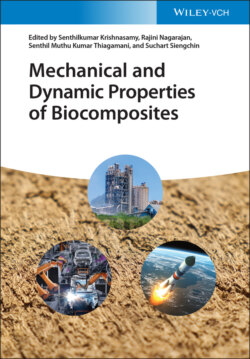Читать книгу Mechanical and Dynamic Properties of Biocomposites - Группа авторов - Страница 28
1.5.2 Thermal Behavior
ОглавлениеThe thermal property is concerned with the response of hybrid FRP biocomposites to heat variation. Boopalan et al. [46] worked on hybrid raw jute/banana fiber‐reinforced epoxy composites with regard to their thermal analysis by varying the fiber weight ratio. They used ratios of 100/0, 75/25, 50/50, 25/75, and 0/100, while varying the temperature with the use of thermogravimetric analysis (TGA) and heat deflection temperature (HDT) analysis. With the TGA, the curve depicted that the 50/50 jute/banana FRP epoxy hybrid composite demonstrated greater thermal stability. There was a shift in the temperature during degradation from a value of 200 °C to a higher value of 380 °C. For the HDT, thermal property was sustained in the 50% jute with 50% banana FRP epoxy hybrid composite at the highest temperature of 90 °C in comparison with other composite samples.
Also, thermal properties of OPEFB/woven jute FRP epoxy hybrid composites were investigated by Jawaid et al. [47], using various temperatures. It was reported in their work that there was an increase in thermal stability when woven jute fibers were added to the EFB composite in its pure state. That is, hybridizing OPEFB with the woven jute fiber caused the thermal stability to be higher as compared with OPEFB fiber. The temperature of degradation was also reported to have shifted from a value of 292 °C to a higher value of 457 °C, leaving 12.1% char residue.
